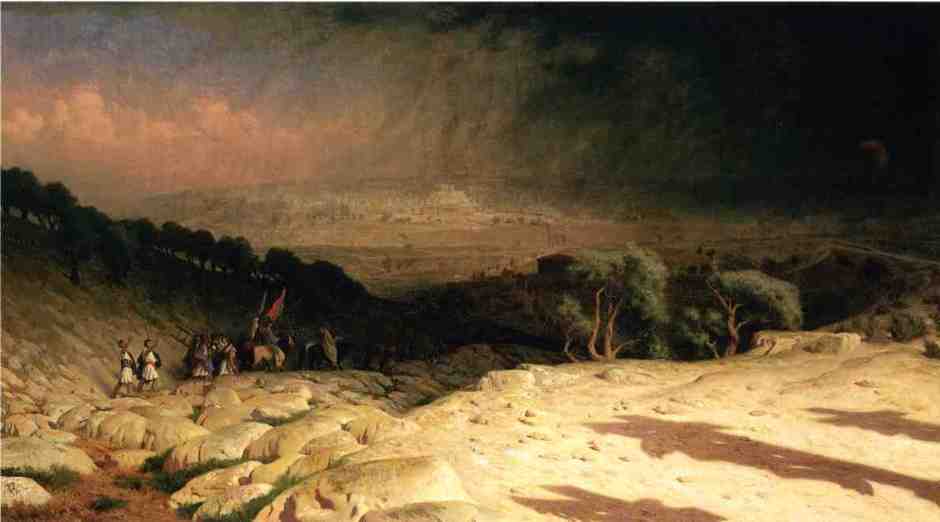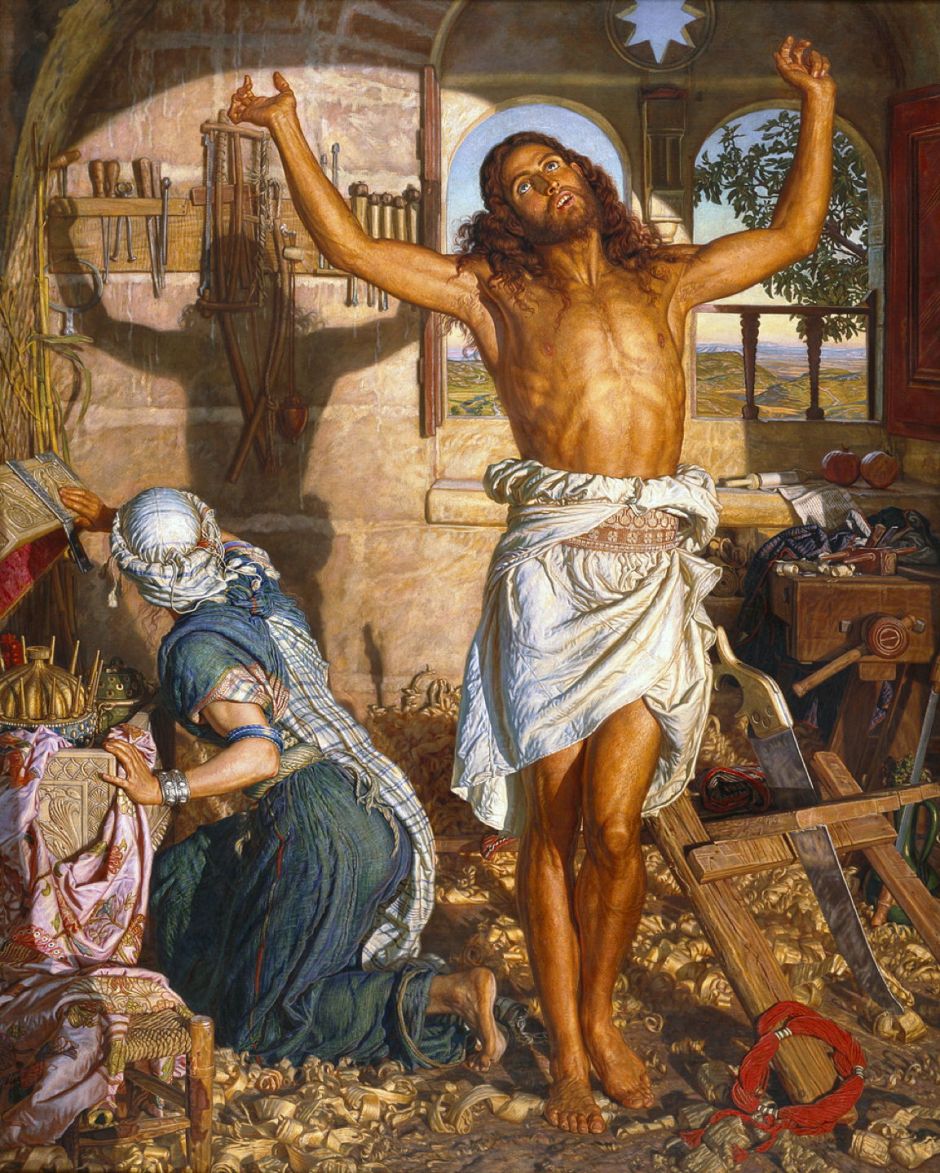Visual art, painting in particular, is all about light and its opposite, dark. This week’s two articles about reading visual art therefore look at two visual devices using light and darkness: this one looks at examples of shadow play, and tomorrow’s at spotlights.
According to ancient legend, the ‘inventor’ of painting wasn’t a man, and did so by tracing the shadow of her boyfriend.
Dibutades, a maid of Corinth in Greece, was about to see her boyfriend sent away from the city on military service. As the daughter of a potter, she devised an ingenious way of making a portrait to remember him by: when he was asleep, she positioned a light to cast his shadow against a wall behind him, then she traced the outline of that shadow in the plaster. Once he had gone, her father transformed his painted silhouette into the first relief sculpture by daubing clay within the silhouette.

In 1778, William Hayley told this story succinctly in his poem An Essay on Painting:
The line she trac’d with fond precision true,
And, drawing, doated on the form she drew …
Thus from the power, inspiring LOVE, we trace
The modell’d image, and the pencil’d face!
Hayley’s friend, the painter Joseph Wright of Derby, turned that into this painting of The Corinthian Maid in about 1782-5, as a commission for Josiah Wedgewood, the affluent founder of the local Wedgewood pottery.
While understanding and depiction of cast shadows has been far from consistent, many painters since Dibutades have made good use of them.

In the Northern Renaissance in particular, cast shadows were used to transform almost monochrome grisaille paintings into trompe l’oeil mimicking sculpture. This example by Robert Campin is both optically faithful and startlingly realistic.

Johann Eleazar Zeissig shows A Family Making Chinese Shadows in his painting from the late 1700s. A family are entertaining themselves late in the evening with the aid of a lamp as a point source of light. An older boy is tracing the silhouette of his mother on a sheet of paper which he holds on the wall behind her. At the upper right are more examples of his ‘shadowgraph’ drawings. Three younger children are holding up their hands to form the silhouettes of a rabbit and a cat.

Golgotha (Consummatum Est, or Jerusalem) from 1867 is one of Jean-Léon Gérôme’s few religious paintings, which composes the scene of the crucifixion in a novel way. It shows the view from Golgotha looking towards Jerusalem as the executioners and crowd make their way down toward the city, which is being overwhelmed by darkness. The three crucifixions aren’t shown directly, but only in shadows cast by a brilliant light.

In William Holman Hunt’s celebrated painting of The Shadow of Death from 1870-73, the young Jesus Christ is seen in his father’s carpentry workshop, holding his arms up to savour the bright sunlight. His cast shadow on the rack of tools and wall behind shows him crucified on the cross, with his mother Mary already on her knees, as shown in so many paintings of the crucifixion.

Mykola Pymonenko’s Yuletide Fortune Tellers from 1888 shows two young women playing a shadow game with a candle, which brings its own shadow play in the magnified head and shoulders cast on the wall behind them.

As late as 1891, Lovis Corinth showed four young boys engaged in Shadow Play, using the light cast from a high window.

The Naturalist artist Émile Friant was an early and enthusiastic photographer, who used photographic prints as an aid to his painting. By the 1890s, some of his paintings bore the hallmarks of optical experimentation, such as his Ombres portées (Cast Shadows) of 1891. This shadow play of a couple lit by a bright point source shows the man looking imploringly up at the woman, who looks aside. Their cast shadows have been manipulated, though: the shadow of his head is about to kiss her left cheek, but her shadow is distant from his.

John Collier attained fame with this ‘puzzle picture’ of The Prodigal Daughter in 1903.
An elderly middle-class couple are seen in their parlour in the evening in their sober black clothes and sombre surroundings. They’re surprised when their prodigal daughter turns up out of the blue, in her low-cut gown with floral motifs and scarlet accessories. Father is still sitting, backlit by a table lamp to heighten the drama. Mother has risen from her chair and is visibly taken aback. Daughter stands, her back against the door and her hand still holding its handle, as if ready to run away again should the need arise. Collier also uses ingenious shadow play: here the mother’s cast shadow makes her appear much larger than the daughter’s, like an ogre bearing down on a child.

During the twentieth century, Surrealists and others have engaged in even greater shadow play. In William Girometti’s Life in the Reflection of Freedom from 1972, one shadow is cast from the bars of a window in a prison cell, the other is shown as a combined reflected shadow from the unoccupied clothing.

